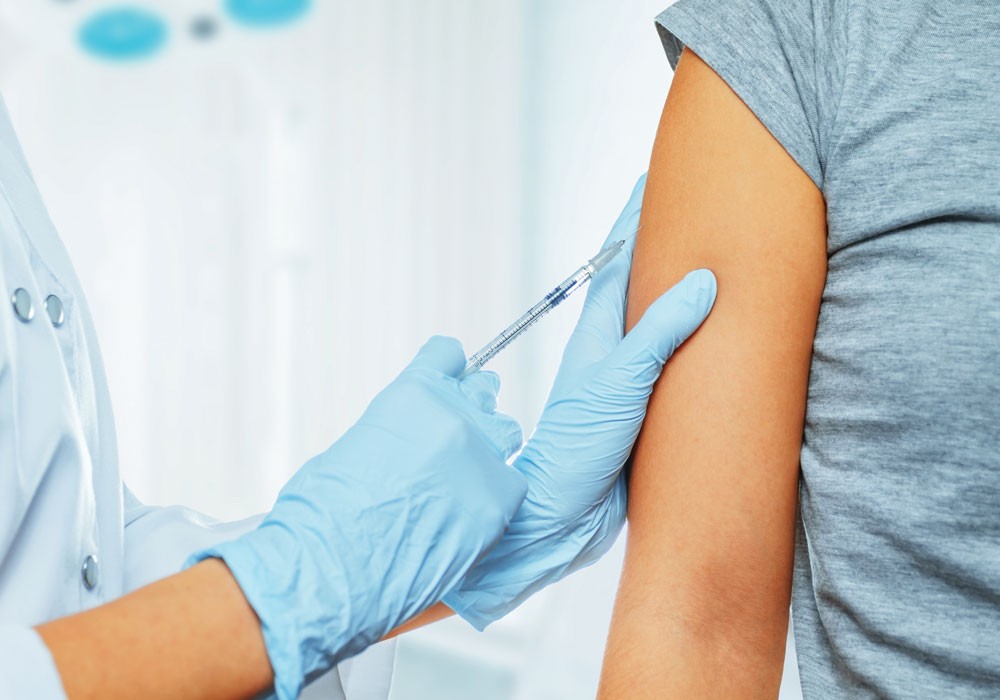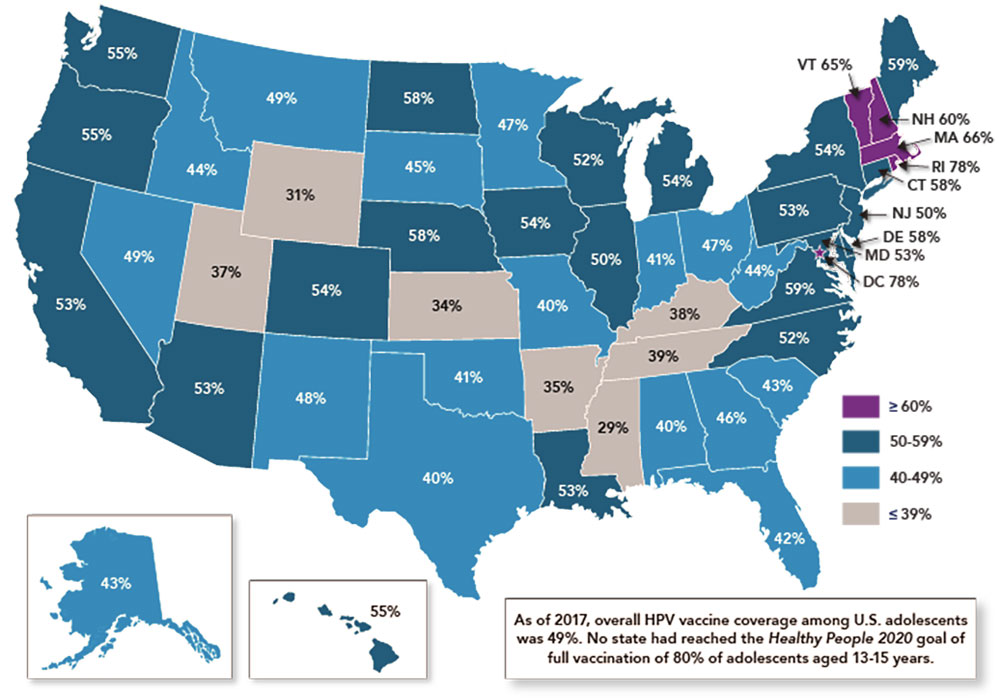For years, the human papillomavirus vaccination (HPV) has been recommended to young adult patients to help prevent certain forms of cancer. In a November 2018 report, the President’s Cancer Panel recommended increasing HPV vaccination efforts to further the United States’ goal to prevent cancer associated with HPV.
According to the panel chair, the United States has fallen far short of its goal to vaccinate 80% of age-eligible adolescents. Only 53% of young women and 44% of young men are up to date on their HPV vaccination schedule. The Cancer Panel offered three goals to help meet the 80% objective, citing the need to reduce missed clinical opportunities to offer the vaccination, increase parent acceptance, and maximize access to the vaccine. The panel also recommended extending its efforts to promote global vaccinations for HPV.
Rates of Up-to-Date HPV Vaccination Among U.S. Adolescents Aged 13-17 Years, 2017
According to the panel’s report, “Substantial progress in HPV vaccine uptake has been achieved in recent years—the percentage of adolescents who started the HPV vaccine series increased an average of 5 points each year between 2013 and 2017. However, HPV vaccine coverage is still too low to achieve its cancer prevention potential."
“Provider- and systems-level changes hold the greatest potential to increase U.S. HPV vaccination rates,” Barbara Rimer, PhD, panel chair, said. “As such, the panel urges healthcare providers to strongly recommend HPV vaccination for all eligible adolescents. In addition, health system leaders should make HPV vaccination a high, measurable priority.”
According to the report, HPV causes nearly 630,000 cancers worldwide every year, including more than 34,000 cases in the United States alone. Nurses are in a key position to further the cancer prevention conversation and make a real impact on their families, loved ones, and communities.







